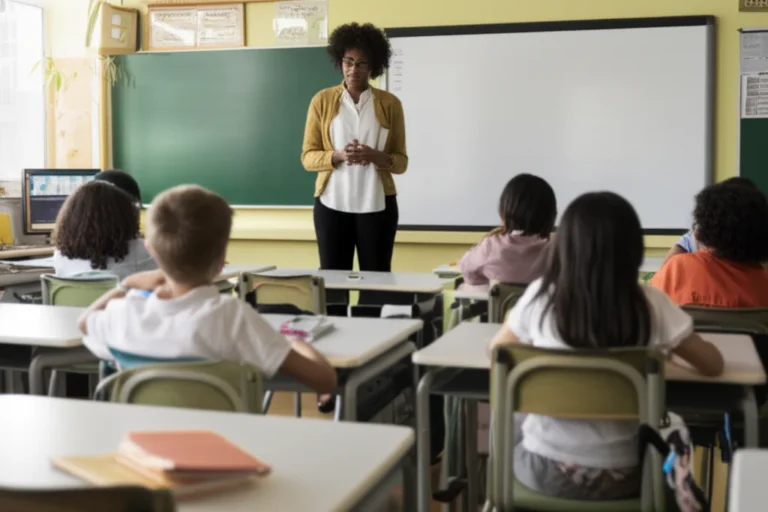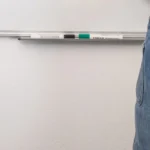Support our educational content for free when you buy through links on our site. Learn more
30 Effective Classroom Management Techniques You Need! 🎓
Have you ever walked into a classroom that felt like a well-oiled machine, where students were engaged, respectful, and eager to learn? 🌟 It’s a beautiful sight, isn’t it? But what if we told you that achieving this kind of classroom environment is within your reach? In this article, we’re diving deep into 30 effective classroom management techniques that can transform your teaching experience and create a thriving learning atmosphere.
From building relationships with students to utilizing technology for better engagement, we’ll explore strategies that not only minimize disruptions but also maximize instructional time. And trust us, you won’t want to miss our insights on adapting techniques for diverse learners! So, whether you’re a seasoned educator or just starting your journey, there’s something here for everyone.
Key Takeaways
- Build Strong Relationships: Establishing connections with students fosters a positive classroom environment.
- Set Clear Expectations: Clearly defined rules and routines help students understand what is expected of them.
- Engage Students Actively: Use interactive strategies to keep students involved and motivated.
- Utilize Technology Wisely: Incorporate tech tools to enhance learning and streamline classroom management.
- Adapt for Diversity: Tailor your approaches to meet the unique needs of all learners.
Ready to enhance your classroom management skills? 👉 Shop Classroom Management Books on Amazon:
Dive in and discover how these techniques can revolutionize your teaching experience!
Table of Contents
- Quick Tips and Facts
- The Evolution of Effective Classroom Management Techniques
- Top 30 Effective Classroom Management Techniques You Need to Know
- Creating a Positive Classroom Environment
- The Role of Communication in Classroom Management
- Engaging Students: Strategies for Active Participation
- Behavior Management Strategies: Setting Expectations
- Utilizing Technology for Classroom Management
- Building Relationships: The Heart of Classroom Management
- Adapting Techniques for Diverse Learners
- Assessing the Effectiveness of Your Management Techniques
- Where Do You Want to Go Now? Exploring Further Resources
- Conclusion
- Recommended Links
- FAQ
- Reference Links
Quick Tips and Facts #quick-tips-and-facts
Here at Teacher Strategies™, we know that a well-managed classroom can feel like a symphony, with everyone playing their part beautifully. But let’s be real – sometimes it feels more like a heavy metal concert gone wrong! 🤘
Before we dive into the nitty-gritty, let’s start with some quick, actionable tips:
- ✅ Start Strong: Set the tone from day one. Clear expectations, engaging activities, and a positive attitude go a long way. Think of it like this: you wouldn’t start a road trip without a map, would you? 🤔
- ✅ Build Relationships: Get to know your students! A little personal connection can work wonders. Plus, it’s way more fun to teach a classroom full of individuals, not just faces. 😊
- ✅ Pick Your Battles: Not every little infraction needs a lecture. Focus on addressing behaviors that disrupt learning. Sometimes a well-placed glance is more effective than a five-minute lecture. 😉
- ✅ Celebrate Successes: Big or small, acknowledge achievements and positive contributions. A little praise can be incredibly motivating! 🎉
Remember: Effective classroom management is a journey, not a destination. There will be good days and, well, let’s just call them “learning experiences.” 😅 The key is to stay flexible, reflect on what works, and never stop learning!
For more in-depth strategies and resources, check out our article about My Teaching Strategies Gold.
The Evolution of Effective Classroom Management Techniques #the-evolution-of-effective-classroom-management-techniques
Remember the days of strict, silent classrooms where desks were bolted to the floor? 🪑 Thankfully, our understanding of effective classroom management has evolved significantly!
From Authoritarian to Student-Centered
Early classroom management models often emphasized control and compliance. While structure is essential, today’s approaches prioritize creating a positive and supportive learning environment where students feel safe, respected, and empowered.
This shift aligns with research highlighting the importance of:
- Social-Emotional Learning (SEL): Recognizing and managing emotions, building relationships, and making responsible decisions.
- Student Engagement: Creating meaningful learning experiences that capture students’ interest and foster active participation.
- Differentiated Instruction: Tailoring instruction to meet the diverse needs of all learners.
For more on incorporating these elements into your teaching, explore our resources on Instructional Strategies, Lesson Planning, and Differentiated Instruction.
The Impact of Modern Challenges
Today’s educators also face unique challenges that shape classroom management approaches:
- Increased Diversity: Classrooms are becoming increasingly diverse, requiring teachers to be culturally responsive and adapt strategies to meet a wider range of needs.
- Technology Integration: While technology offers incredible learning opportunities, it also presents new management considerations, such as digital citizenship and responsible device use.
- Mental Health Awareness: Educators are increasingly attuned to the mental health needs of their students, emphasizing trauma-informed practices and creating supportive classroom cultures.
These evolving challenges underscore the need for ongoing professional development and a willingness to adapt strategies to meet the needs of today’s learners.
Stay tuned! In the next section, we’ll unveil our top 30 effective classroom management techniques that incorporate these modern perspectives.
Conclusion

In wrapping up our deep dive into effective classroom management techniques, it’s clear that mastering these strategies is essential for creating a thriving learning environment. We’ve explored a variety of approaches, from building relationships and setting clear expectations to utilizing technology and adapting for diverse learners.
Positives:
- Engagement: Implementing these techniques can significantly boost student engagement and participation.
- Positive Environment: A well-managed classroom fosters a supportive atmosphere where students feel safe and valued.
- Flexibility: Many strategies can be tailored to fit individual classroom dynamics and student needs.
Negatives:
- Time-Consuming: Some strategies may require significant time and effort to implement effectively, especially in the beginning.
- Inconsistency: Without consistent application, even the best strategies can falter, leading to confusion among students.
Overall, we confidently recommend that educators embrace these techniques as part of their toolkit for classroom management. Remember, it’s a journey of continuous improvement, and every classroom is unique. So, stay flexible and adapt as needed!
Now that you’re equipped with these insights, you can confidently tackle any classroom challenge that comes your way! 🎉
Recommended Links
- 👉 Shop Classroom Management Books on Amazon:
FAQ

What are the most important classroom management skills for new teachers to develop?
Clear Communication
New teachers should focus on developing clear communication skills. This includes articulating expectations, providing instructions, and maintaining open lines of communication with students and parents.
Flexibility and Adaptability
Classrooms are dynamic environments. Being flexible and willing to adapt your strategies based on student needs and classroom dynamics is crucial for effective management.
Conflict Resolution
Developing conflict resolution skills helps teachers address issues promptly and constructively, fostering a positive classroom culture.
How can I create a positive and respectful classroom environment that promotes learning?
Establishing Relationships
Building strong relationships with students is foundational. Show genuine interest in their lives, listen actively, and create a sense of belonging.
Setting Clear Expectations
Clearly outline classroom rules and expectations from day one. Involve students in the process to foster ownership and accountability.
Encouraging Positive Behavior
Use positive reinforcement to acknowledge and celebrate good behavior, which encourages a respectful and supportive atmosphere.
Read more about “40 Core Teaching Strategies to Transform Your Classroom in 2025! 🚀”
What are some strategies for managing challenging student behaviors and minimizing disruptions?
Proximity Control
Moving around the classroom can help deter off-task behavior without confrontation. It allows you to monitor student engagement more effectively.
Addressing Issues Promptly
When disruptions occur, address them promptly and privately when possible. This minimizes embarrassment and helps maintain a positive learning environment.
Involving Students in Solutions
Encourage students to participate in developing solutions for disruptive behaviors. This empowers them and fosters a sense of responsibility.
How can I establish clear expectations and routines to support effective classroom management and maximize instructional time?
Consistent Routines
Establish consistent routines for daily activities, such as entering the classroom, transitioning between tasks, and managing group work. This predictability helps students feel secure and focused.
Visual Aids
Use visual aids, such as charts or posters, to display classroom rules and routines. This serves as a constant reminder and reinforces expectations.
Regular Check-Ins
Conduct regular check-ins with students to assess their understanding of expectations and routines. This can help identify any areas that need clarification or adjustment.
Reference Links
- Classroom Management Techniques and Tips – CUNY
- Classroom Management Strategies – Prodigy
- Best Classroom Management Strategies – Schools That Lead
By leveraging these resources and strategies, you can create a classroom environment that not only minimizes disruptions but also maximizes learning opportunities for all students. Happy teaching! 🌟





